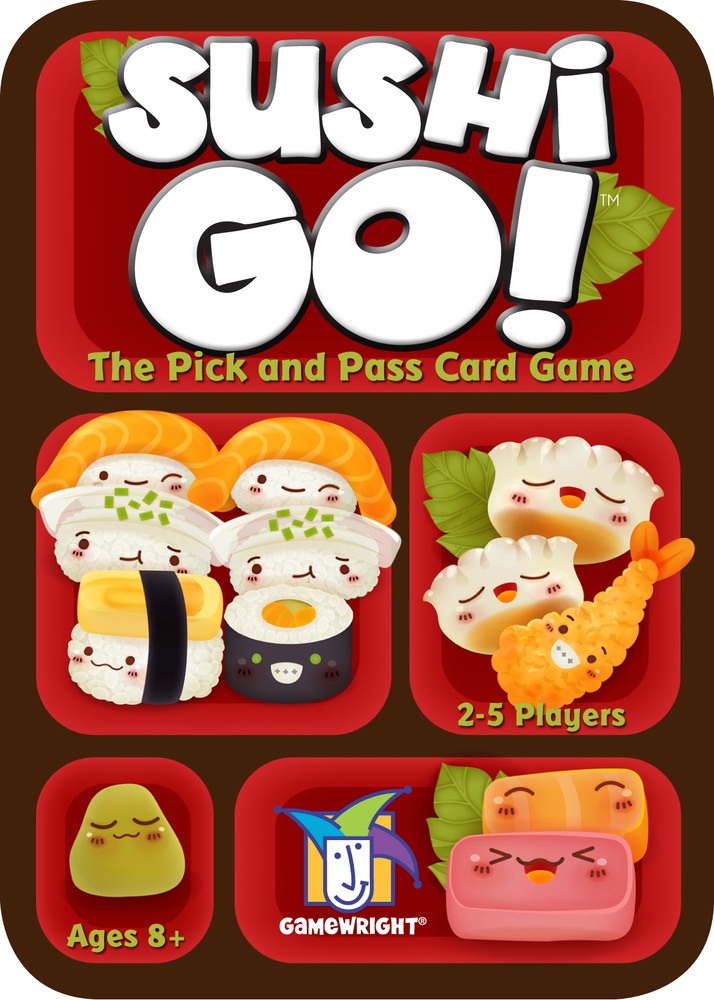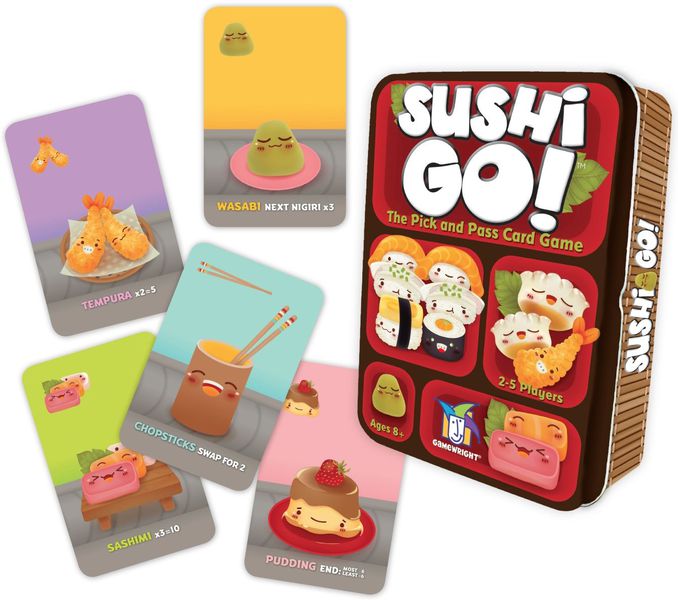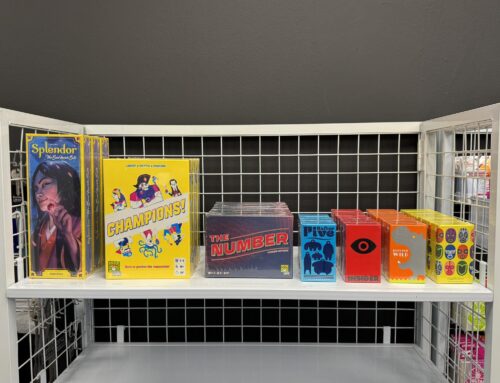Hey PI-Fans,
We’re back once again with another set of food themed reviews. This time, Games @ PI is taking Gamewright’s modern classic Sushi Go out for a spin.
Distilling the game mechanics of card drafting to an easily understandable format, Sushi Go is a fast paced and fun game set in a conveyor belt sushi restaurant.
Given his last review was Ramen Fury, perhaps, the man is hungry, but Wesley is back to talk about Sushi Go and the Games @ PI Webstore!
– Kenneth, Games @ PI Manager
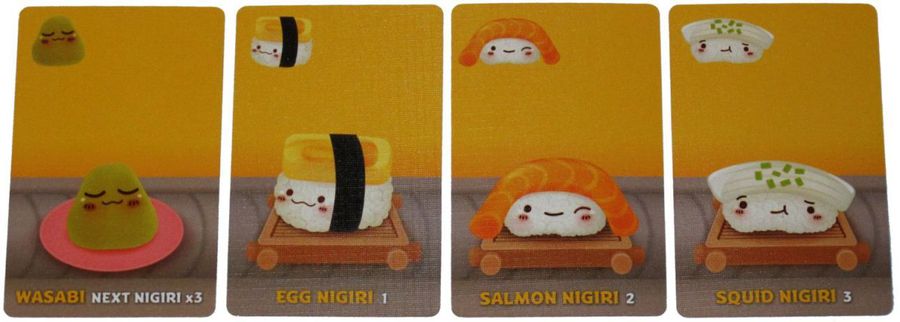
TL;DR: Simple fun for all ages, Sushi Go pits two to five players against each other to see who can have a better meal. Everyone is given a hand of sushi cards at the start of a round, which they will pick one to keep for themselves, then pass the rest to the player on the left or right. The process repeats until all the cards have been taken, ending the round. From there, scores are counted, and sushi cards are returned to the deck, keeping any pudding cards they have taken. The game ends in the third round. The player with the most points wins.

As the circuit breaker is coming to a close (albeit in phases), one of the things I’m looking forward to are my weekly game nights with friends. On some nights, it’s storytelling with Dungeons and Dragons; on others, it’s long slogs with Descent: Journeys in the Dark.
Sometimes, maybe one of us has had a long day and coming up with a plan on how to beat the boss can be quite tiring. On these nights, we open the “quick and relaxing” drawer to pull out Sushi Go, a game about scoring points by having a nice, elaborate meal of sushi, sashimi, and desserts to top it all off.
Sushi Go is a set-collection drafting game for two to five players that is easy to understand, while having enough strategy options to fit both the casual player and the veterans. The game puts players into customers at a sushi restaurant, where “sushi” cards are dealt to each player. Just like picking sushi from the conveyor belt in sushi restaurants, players would pick a card from their hand to keep for themselves, scoring them at the end of the round.
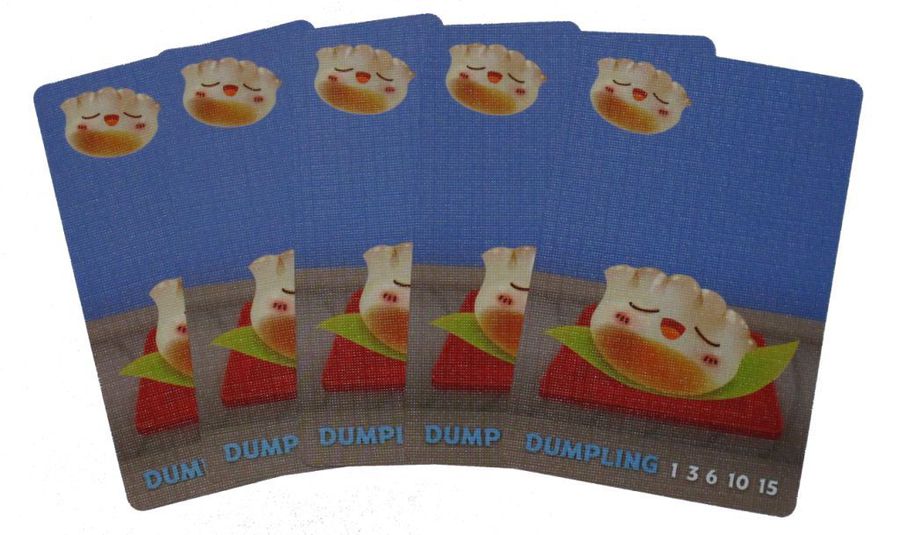
Each sushi card has a unique way to score points; for instance, collecting sets of 3 sashimi cards nets you 10 points, while dumpling cards score you more points the more copies you have. Some cards have powerful effects and can change the game quite drastically.
Once everyone has decided on a card they want to keep, all players will reveal their chosen cards at the same time. Following the conveyor belt analogy, players will then pass their hands to the player on their left or right, depending on the round, and pick a card to keep for themselves and repeat the process.
Once every card is given out, everyone counts the points they scored that round, then all cards collected are discarded except for pudding cards. These are kept until the end of the game, after 3 rounds, giving the player with the most copies 6 points and the player with the least copies -6 points at the end of the game.
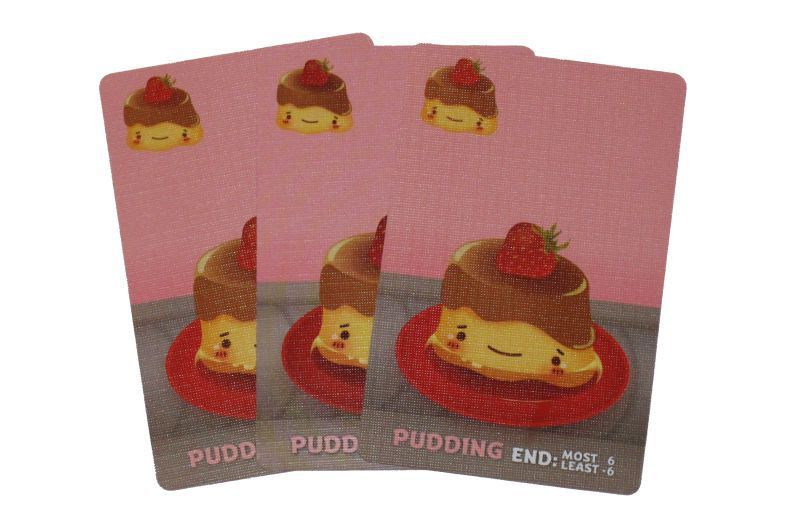
Despite its simplicity, Sushi Go is a drafting game that lets you choose how you want to play. You could focus on simply collecting card sets and take what is given to you, or you could also take a look at what your neighbour might want to take on their turn and deny them by picking that card. Both strategies work well, which is why it is such a popular game that keeps a good mix of strategy and straightforward that lets the player decide how they want to play.
The pudding cards are also an interesting gameplay mechanic, because they add a kind of weight for players to think about when choosing cards. Instead of taking that extra Maki points, picking up a pudding card could mean someone else will take a 6-point penalty at the end of the game.
These small choices might not even matter in the end, since the game is played over 3 rounds. A player that is last on the scoreboard in the first round may end up winning if they play their cards right. Luck is a factor when it comes to drafting games, but so is strategy.
There is something to mention about Sushi Go’s game design that makes it last the test of time. The game has been around for years, yet I find myself recommending it to people if they were looking for a game that a family can play. Parents, children, adults who want something easy to pick up, Sushi Go’s accessible design lets people pick it up within a few minutes and provides hours of fun.
– By Wesley Tay
